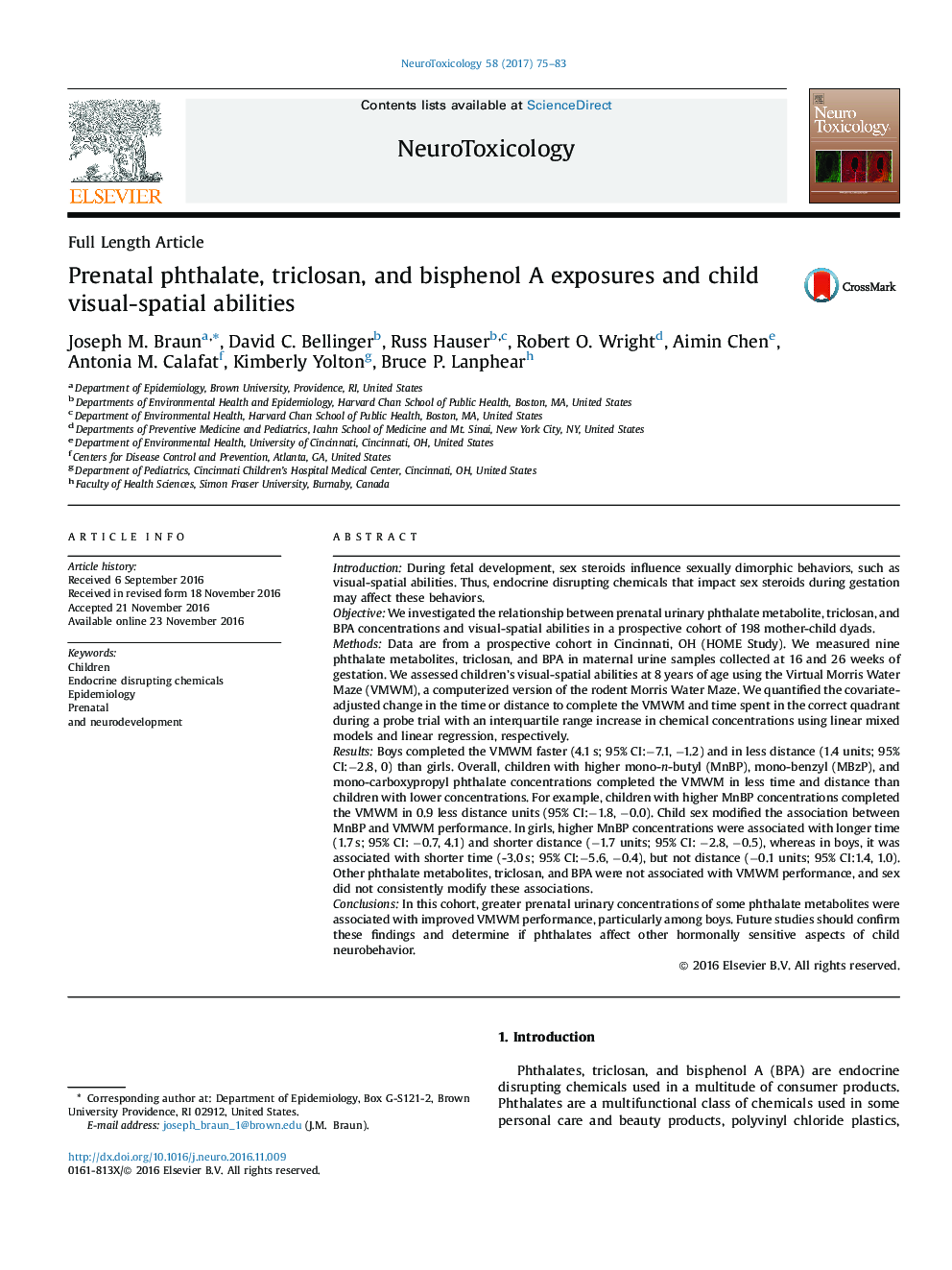| کد مقاله | کد نشریه | سال انتشار | مقاله انگلیسی | نسخه تمام متن |
|---|---|---|---|---|
| 5560866 | 1562036 | 2017 | 9 صفحه PDF | دانلود رایگان |
- We administered the Virtual Morris Water Maze (VMWM) to 198 8-year old children.
- On average, male children performed better than female children.
- In boys, VMWM exposure was associated with prenatal exposure to some phthalates.
- Prenatal bisphenol A or triclosan exposure was unassociated with VMWM performance.
IntroductionDuring fetal development, sex steroids influence sexually dimorphic behaviors, such as visual-spatial abilities. Thus, endocrine disrupting chemicals that impact sex steroids during gestation may affect these behaviors.ObjectiveWe investigated the relationship between prenatal urinary phthalate metabolite, triclosan, and BPA concentrations and visual-spatial abilities in a prospective cohort of 198 mother-child dyads.MethodsData are from a prospective cohort in Cincinnati, OH (HOME Study). We measured nine phthalate metabolites, triclosan, and BPA in maternal urine samples collected at 16 and 26 weeks of gestation. We assessed children's visual-spatial abilities at 8 years of age using the Virtual Morris Water Maze (VMWM), a computerized version of the rodent Morris Water Maze. We quantified the covariate-adjusted change in the time or distance to complete the VMWM and time spent in the correct quadrant during a probe trial with an interquartile range increase in chemical concentrations using linear mixed models and linear regression, respectively.ResultsBoys completed the VMWM faster (4.1Â s; 95% CI:â7.1, â1.2) and in less distance (1.4 units; 95% CI:â2.8, 0) than girls. Overall, children with higher mono-n-butyl (MnBP), mono-benzyl (MBzP), and mono-carboxypropyl phthalate concentrations completed the VMWM in less time and distance than children with lower concentrations. For example, children with higher MnBP concentrations completed the VMWM in 0.9 less distance units (95% CI:â1.8, â0.0). Child sex modified the association between MnBP and VMWM performance. In girls, higher MnBP concentrations were associated with longer time (1.7Â s; 95% CI: â0.7, 4.1) and shorter distance (â1.7 units; 95% CI: â2.8, â0.5), whereas in boys, it was associated with shorter time (-3.0Â s; 95% CI:â5.6, â0.4), but not distance (â0.1 units; 95% CI:1.4, 1.0). Other phthalate metabolites, triclosan, and BPA were not associated with VMWM performance, and sex did not consistently modify these associations.ConclusionsIn this cohort, greater prenatal urinary concentrations of some phthalate metabolites were associated with improved VMWM performance, particularly among boys. Future studies should confirm these findings and determine if phthalates affect other hormonally sensitive aspects of child neurobehavior.
Journal: NeuroToxicology - Volume 58, January 2017, Pages 75-83
